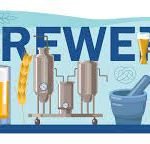Morningstar, one of the leading investment research and advisory firms in the world, has just released its latest product – the Morningstar Mc8. This AI-powered software is designed to help you make better investment decisions by analyzing a range of data points to give you an overview of a particular asset class.
Even if you’re not interested in investing your own money, it’s worth taking a look at Morningstar Mc8 because it could be a valuable tool in helping you make informed decisions about which products or services to buy.
Morningstar MC8: What You Need to Know
Morningstar MC8 is a retirement investment analysis tool that allows investors to compare mutual funds.
Morningstar has released its newest retirement investment analysis tool, Morningstar MC8. This tool allows investors to compare mutual funds in a more holistic way.
One of the key benefits of Morningstar MC8 is that it allows investors to explore funds beyond their typical categories. For example, you can compare a fund that invests in stocks and bonds with a fund that specializes in real estate investing.
Morningstar MC8 also offers insights into fees and expenses. This information can help you make informed decisions about which funds to invest in.
If you are interested in using Morningstar MC8, be sure to read the FAQ section first. It includes helpful information on how to use the tool and answers some common questions.
The Morningstar Rating System
The Morningstar Rating System is a tool that investors and analysts use to compare the performance of different mutual funds.
Each mutual fund is assigned a Morningstar Rating, which ranges from 1 (negative) to 5 (positive). A fund with a rating of 1 is considered to be poor, while a 5 rating is the best.
The ratings are based on a number of factors, including the fund’s historical performance, its risk-adjusted return, and how well it handles risk.
One of the main factors that determines a fund’s rating is its risk-adjusted return. This metric measures how well the fund outperforms an index over time. A fund with a higher risk-adjusted return will typically have lower ratings than a fund with a lower risk-adjusted return.
However, even a low-rated fund can still have good returns in the long run if it has low fees and invests in good stocks.
How the Ratings Work
Morningstar has a rating system that helps people decide which stocks to buy and sell.
Morningstar has a rating system that helps people decide which stocks to buy and sell. Each stock is assigned a Morningstar rating from 1 to 5 stars. The higher the star rating, the better the stock is thought to be.
The ratings are based on a number of factors, including financial stability, operational performance, industry performance, and prospects for growth.
If you want to buy or sell a stock, you need to find its Morningstar rating. You can find this information in the company’s annual report or on the company’s website.
The Five Dimensions of a Morningstar Rating
Morningstar is the leading provider of independent investment analysis and information. They offer a five-star rating system to help investors make informed decisions about which stocks to buy and sell.
A Morningstar rating is made up of five dimensions: 1) Financial Strength, 2) Risk/Reward, 3) Competitive Position, 4) Management Efficiency, and 5) Earnings Quality.
Financial Strength measures how well a company has managed its financial resources over the past three years. It looks at factors such as debt levels, interest coverage, and cash flow.
Risk/Reward measures how much upside potential a stock has compared to its risk level. The higher the score, the more upside potential there is for the stock.
Competitive Position measures how well a company competitively positions itself in its industry. It looks at things like market share, revenue growth, and profitability.
Management Efficiency measures how well the company is run and how effective its management team is. It looks at things like CEO tenure, board diversity, and insider ownership.
Earnings Quality measures how consistent a company’s earnings are over time. It looks at things like margins, return on equity (ROE), and profitability growth rates.
A Brief Look at Each Category of the Morningstar Rating System
Morningstar is a company that provides financial advice to investors. They have created a rating system called the Morningstar Rating System (MRS). The MRS is a system that allows investors to compare the performance of different types of investments.
The MRS has five categories: 1) Fundamentals; 2) Risk-adjusted Return; 3) Fee-adjusted Performance; 4) Changes in Annual Net Asset Value ( ANNV ); and 5) Quality.
Each category has its own set of criteria that an investment must meet in order to receive a rating. For example, Fundamentals categories include things like liquidity and credit quality. Each category has a number of subcategories, which are further broken down into factors. For example, the Liquidity subcategory includes things like market depth and turnover rates.
An investment will receive a rating in one or more of the five categories, depending on how it meets the criteria in that category. A higher score in a category means a better performance. For example, an investment that receives a rating in the Risk-adjusted Return category would have outperformed an investment with a rating in the Fee-adjusted Performance category by having lower risk while also earning higher returns.
Which Morningstar Ratings Are Right for You?
There are a variety of Morningstar ratings that investors can use to make informed decisions about investments.
Morningstar offers two types of ratings: Standard and Poor’s. Standard Ratings indicate how an investment compares with similar securities in the same category, while Poor’s Ratings indicate how an investment compares with securities in a different category.
Investors should use Standard Ratings when making their investment decisions. This type of rating takes into account the overall performance of the investment, not just the performance of one particular period.
When looking at individual stocks, investors can use either Standard or Poor’s Ratings. However, when investing in mutual funds or ETFs, they should use Poor’s Ratings because they are more accurate.
Investors also have the option to custom-rate their investments using Morningstar Rating Scale Scores (MRS). MRS calculators give investors a numeric score for each stock and Mutual Fund that they own or recommend. This score helps investors make more informed decisions about where to put their money.
Morningstar offers several other ratings such as Gold, Growth, Income and Conservative. However, these ratings are not as widely used as Standard and Poor
Morningstar is one of the leading investment analysis and advisory firms in the world.
Morningstar is one of the world’s leading investment analysis and advisory firms. It offers a variety of services, including mutual fund and ETF ratings, financial planning advice, and investment research. Morningstar also provides information on a wide range of stocks and funds.
Morningstar ratings are extremely important to investors. Ratings range from 1 (poor) to 5 (excellent). A rating of 3 or 4 means that the stock is worth buying, while a rating of 1 or 2 means that it is not worth buying.
Since Morningstar rates stocks on a scale from 1 to 5, it is important to understand the strengths and weaknesses of each stock before making an investment decision. For example, a stock with a rating of 3 might be a good buy if you are looking for a stable investment that will not experience large fluctuations in value. On the other hand, a stock with a rating of 4 might be a better choice if you are looking for an investment that will provide high returns over time.
Morningstar also offers financial planning advice and investment research. This information can help you make informed decisions about your investments and protect your money.
They offer a wide range of products and services including mutual funds, ETFs, individual stocks, and retirement plans.
Morningstar is one of the most well-known providers of investment products and services. They offer a wide range of products and services, including mutual funds, ETFs, individual stocks, and retirement plans.
One thing that sets Morningstar apart from other providers is their ability to provide detailed information on each product. This allows investors to make informed decisions about their investments.
Another distinguishing feature of Morningstar is their commitment to quality. They have an excellent reputation for providing quality investment information. This has led many financial advisors to recommend them to their clients.
Morningstar has been around for over years and is well-known for their unbiased ratings and reviews.
Morningstar is a well-known review company that has been around for over 10 years. They have a reputation for being unbiased, and their ratings and reviews are often relied upon by investors.
One of the main things that Morningstar does is review stocks using a method known as “Morningstar Rating System” (MSS). This system takes into account a number of factors, including earnings stability, dividend growth, financial strength, and management quality.
Overall, Morningstar is a reputable company that investors can rely on for unbiased ratings and reviews of stocks.
In this morningstar mcreview, we’ll be taking a look at some of the best mutual funds available from Morningstar.
One of the best ways to invest your money is through mutual funds. Mutual funds are collections of stocks and bonds that are managed by professional money managers. They allow you to invest in a variety of different securities, which can give you a wide range of returns.
In this morningstar mcreview, we’ll be taking a look at some of the best mutual funds available from Morningstar. We’ll be covering several different categories, such as international, large cap, and small cap funds. We’ll also be highlighting some of the best funds in each category.
We’ll
Morningstar has released a new report that provides an in-depth look at how much risk you’re taking by investing in stocks.
Investors have been worried about the market for years now, and it seems like every day there’s a new headline about how the stock market is about to crash. But what do the experts say?
Morningstar has just released a new report that looks at all the risks associated with investing in stocks. The report provides an in-depth look at how much risk you’re taking by investing in stocks, and it also compares stock investments to other alternatives such as bonds and cash.
The study shows that over time, stocks have always been a risky investment. In fact, stock investments are more risky than any other type of investment, including bonds and cash. This means that even if you get a good return on your stocks over time, you could still lose money if the market goes down.
So why invest in stocks if they’re so risky? The answer is that stocks provide investors with the potential for higher returns than any other type of investment. But remember: Stock investments are always a risk, and you should never invest money that you can’t afford to lose.
Morningstar Ratings
Morningstar ratings are a great way to understand how a certain investment could perform in the future.
Morningstar is a well-known investment rating company. They provide ratings for a variety of different investments, including stocks, bonds, and mutual funds.
One of the most important things to consider when looking at Morningstar ratings is the Morningstar Rating Score (MRS). This score is based on a number of factors, including past performance, risk exposure, and liquidity.
The MRS for a stock is the sum of its Morningstar Category Ratings (CATRs). A CATR is a scale that ranges from 1 to 5 stars. The higher the rating, the better the stock has performed in the past.
The MRS for a bond is based on its yield and principal amount. Yield is the percentage of return that an investment generates over time, while principal amount is how much money you are actually investing. A 5-star bond has a MRS of 50%, while a 2-star bond has a MRS of 20%.
The MRS for a mutual fund is based on its assets under management (AUM). AUM is how much money the fund has managed to collect from investors
What Morningstar Ratings Mean
Morningstar is a provider of investment information and services. It assigns a Morningstar rating (1 to 5 stars) to each company, investment fund, or mutual fund that it reviews. The rating is based on a number of factors, including the funds’ risk-adjusted performance, expenses, and governance.
The ratings help investors make informed decisions about which investments to pursue. They can also help companies and fund managers attract investors and make more money.
The ratings are important because they provide an objective measure of a company’s performance relative to other companies in its industry. This helps investors compare apples to apples when making investment decisions.
Overall, Morningstar ratings are an important tool for investors who want to make well-informed decisions about which investments to pursue.
How Morningstar Ratings are Calculated
Morningstar ratings are one of the most commonly used financial rating systems. They are used by individuals and organizations to make decisions about which investments to make.
Morningstar ratings are based on a number of factors, including a company’s financial performance, Morningstar risk score, and Morningstar quality score. The risk score is based on the volatility of the company’s stock prices and its debt burden. The quality score is based on how well a company manages its financial resources.
In order to calculate a company’s Morningstar rating, Morningstar first measures its profitability using return on equity (ROE) and return on assets (ROA). It then uses these measures to create a risk score. The higher the risk score, the greater the level of risk associated with the investment.
After calculating the risk score, Morningstar then assigns a Morningstar quality score to each company. The quality score is based on a number of criteria, including financial stability, governance, liquidity, corporate citizenship, and reputation.
Overall, Morningstar ratings are an important tool for people who want to make informed investment decisions. They provide information about a company’s financial performance and riskiness so that investors can make informed decisions about their investments.
What is an Exchange-Traded Fund (ETF)?
An Exchange-Traded Fund (ETF) is a type of mutual fund that trades on the stock market like a normal stock, but it tracks an underlying index. This means that it buys and sells shares of the fund based on the changing prices of the underlying index, rather than buying and selling individual stocks.
ETFs are very easy to use. You simply buy or sell shares of the ETF in the same way that you would buy or sell shares of a regular mutual fund. The main advantage of ETFs is that they allow you to invest in a variety of different types of investments without having to worry about all the different details involved in owning individual stocks.
Another advantage of ETFs is that they are very cost efficient. ETFs charge lower fees than traditional mutual funds, which means that you will save money over the long term.
Why Invest in an ETF?
One of the primary reasons to invest in an ETF is because they offer a variety of investment opportunities that are not available with individual stocks. For example, ETFs can be invested in dividend-paying stocks, companies with high growth rates, or companies with specialties.
Another reason to invest in ETFs is that they are very liquid. This means that you can trade them quickly and easily, which can give you more opportunities for profit. Plus, ETFs typically charge relatively low fees, which makes them a great way to invest your money.
How to Use a Morningstar Rating to Guide Your Investment Choice
Morningstar is a well-known and respected rating agency that provides ratings for both mutual funds and individual stocks. Ratings from Morningstar can help you make informed investment choices.
When you invest in a mutual fund through a broker or online brokerage, the fund company will likely provide you with a Morningstar rating. This rating will indicate how much risk the fund is assuming—from high to low risk.
You should use a Morningstar rating when making an investment decision because it provides you with important information about the fund. For example, a high-rated fund is likely to have lower risk than a low-rated fund, which may be better suited for your investment goals.
To find out how a particular fund ranks on the Morningstar scale, visit the Morningstar website. You can also use the Morningstar app to access this information on your smartphone.
Conclusion
If you’re looking for a well-rounded, high-quality weight loss program, Morningstar’s Mc8 might be the perfect fit for you. The app offers an impressive range of features, including personalized meal plans and unlimited support from a team of experts. Additionally, it has been designed with ease of use in mind – making it easy to follow along no matter what your skill level or dietary preferences are. If you’re ready to take your weight loss goals to the next level, Morningstar Mc8 is definitely worth checking out!











